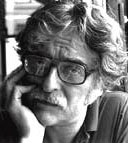 |
→ February 2006 Contents → Column
|
Nuts & Bolts
|
 |
|
This being the 100th, or sort of the 100th, issue of The Digital Journalist, I am sure that phrases like "THE DIGITAL REVOLUTION" will abound in some of the articles.
Actually, there are a number of photographic "revolutions" that are at least as important. There's the one that started it all, "THE CAMERA OBSCURA REVOLUTION." Then there's the "LENSES OF GLASS INSTEAD OF PINHOLES REVOLUTION." How about "THE ROLL FILM REVOLUTION" that let you take a lot more pictures in a hurry than the glass plate revolution ever did?
One thing about almost all photographic revolutions, quality aside: they make it easier to take more pictures in less time. That, of course, makes "THE THUMBWIND REVOLUTION" incredibly important, and yet dwarfed by "THE MOTOR DRIVE REVOLUTION."
For those who think more is better, "THE DIGITAL REVOLUTION" is a godsend. For those who think more is more, the final judgment will be a little more complex.
For most of us, film photography came with a set of brakes. Until the autofocus SLRs became the predominant news camera, most cameras did not have motorized advances or autofocus. That slowed you down. You were always a little bit cautious about shooting so fast that you would come to the end of a roll of film just as the best picture appeared. (The 4 GB compact flash card sure put an end to that.) You instinctively shot less, looked more and waited for the moment.
After film was processed, at least for the mags, you louped contact prints or slide sleeves, then made proof prints or projected the slides for a better look, and only then came the final prints or the selection of images for publication.
For the news business, it was a slow process. But with each stage, in camera or out, images were rejected and selected until, hopefully, only the best, the few survived.
The process of selecting final digital images for publication is not only much quicker, but often you are looking through a greater volume of images. Many photographers seem to think that holding down the button and producing a burst of "frames" will guarantee a good picture. I think that it's the exact opposite. Unless you choose the moment, the good one will always occur "between frames." Maybe Ken Jarecke, returning from the Katrina disaster, had a more practical perspective. He simply said he couldn't see how photographers who stuck to the "eight-frame burst" school of news photography could edit that much material.
Presuming you haven't used the small screen on the back of the camera to erroneously trash some of your best images while they are still in the camera, the digital editing process starts and ends in one session. If you are working away from your home base, your schedule is made even tighter by the fact that you will often have to transmit your selects once you have edited.
The dashing foreign correspondent no longer heads for the bar at the end of the day to entrance glamorous women with his tales of courage. He drags his silly butt up to his hotel room. Up go the images on his computer screen, quick comparisons are made and pictures transmitted. There's not much choice; production schedules have become shorter. And it's nice to get a little sleep before you have to go back out and watch some of the uglier things people can do to each other.
There's not a great deal of reflection that goes into the selection of the digital news pic.
But, there is good news: there is nothing original about a digital news picture.
Let me explain. When you make a copy of an original digital image, it is identical to the original. When you transfer a digital image from your camera to the computer, you are not tempted to save the image on the camera's compact flash card because the image on the computer's hard disc is an exact match. In digital photography, until you alter an image, there is no "original" or all the images are "originals." Being essentially negative in outlook, I like to think that there is no such thing as an original.
Newspapers, magazines and photo agencies will lose, mutilate, misplace, mishandle and destroy images in the process of getting out the news. The loss or mutilation of that precious film original was always a knife to the heart. But you have "Dolly, the Photo."
You have the clone. I don't care what your editor tells you about work for hire or what the imperious file clerk tells you about who owns the picture. Copy everything; keep it in your own file cabinet. We'll work out the niceties later.
Now you know what the real digital revolution is -- Dolly, the Digital Clone. It will affect ownership, theft, copyright, distribution, pricing (do you really want to pay extra for a "vintage" clone or would you like a nice, fresh clone?).
Store your clones on an auxiliary hard disc; they can last longer than CDs. Store them on two identical hard discs; then when one goes down you still have your images. Store them on three identical hard discs and keep two in the office and one in a safe deposit vault.
At your leisure, dive into that pile of clones and do a proper edit.
© Bill Pierce
Contributing Writer
|
|
Back to February 2006 Contents
|
|